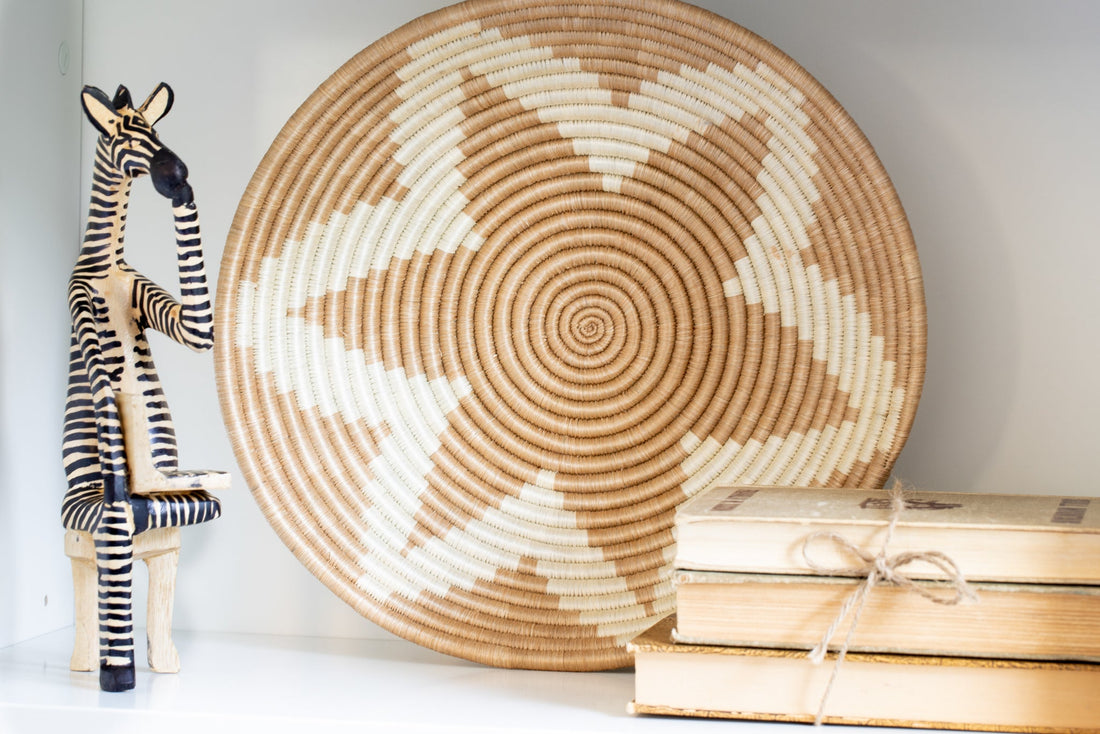
Photo: Hudson Home
Layer: When creating a vignette always start with the largest piece in the back or off to one side working in an asymmetrical or triangular shape. Try a large mirror, or lean a piece of art against a wall or the back of a bookshelf to ground your vignette and work your way to the front with the smaller pieces. Stagger your pieces to create an interesting composition rather than lining them up.
|
|
Numbers: A lot of designers talk about the rule of three when styling an area. It's the smallest number that our brain recognizes as a pattern, and our eyes just find it more aesthetically pleasing to see objects in this way. However, creating a vignette with objects that are in larger odd numbers such as five or seven objects works just as well.
|
 Photo: Erin Spain
Height & Shape: Introducing various shapes and sizes to your vignette will enhance the visual interest and soften out all the hard edges of boxy furniture. Look for objects that have unusual, organic shapes such as sculptures, bowls, baskets, candles, and clocks. Size matters because you want to create a bit of contradiction. Ideally, you'd have one item that is taller than the rest of your vignette to bring the eye up. This can be a lamp, a vessel filled with flowers or branches, or art.
|
 Photo: Nadine Stay
Natural elements: Fresh greenery, a plant, or flowers will always add texture and dimension to your vignette, not to mention, it may be just what you’re looking for to add a bit of height. Don’t forget about other natural elements too; collected rocks, driftwood, seashells, fresh fruit, and sea glass are all examples of natural elements that would work in a vignette.
|
 Photo: Anika Murthy
Materials, Pattern & Texture: Experiment with different materials that have varying textures and patterns to create a bit more depth and interest. Baskets, ceramics, wood, and metals, when thoughtfully mixed together can make your vignette look designer-worthy.
|
|
Get personal: To achieve a space that feels warm and inviting, you'll want to add a few personal pieces of décor. The illustration of your interests and experiences makes a house feel like a home. Personal elements such as old black-and-white family photos, special treasures from your travels, and cherished collections can and should be integrated into your vignette.
|
 Photo: Loi Thai
Color: Even if you're vignette is perfectly executed, a noisy color palette will detract from it. Neutrals can serve as the foundation of your overall color scheme then choose a couple of complementary colors for contrast and interest. I prefer the pop of color to be in the form of plants, flowers, and small accessories that are easy and inexpensive to swap out once I'm ready for a change. |
 Photo: Making LemonadePlay & Edit: Speaking of change, whenever I feel like I want to update a space, I will first "shop" my own home before I run out to buy new pieces. Gather all of your pieces and lay them out on a table and have fun rearranging them in a new way. Switching items from one vignette to another will refresh your space and make your pieces feel new again. The best part is you didn't have to spend a dime! |
 Photo: Salvage Sister & MisterA word about collections: Do you have a collection of books, globes, pottery, cameras, or anything else? Display them! Group them together in one space such as a cabinet, shelf, or console. Even if the colors are a bit varying, as a group they will look unified. I hope you enjoyed this post and feel inspired to try out a vignette or two in your own home. Share your thoughts and comments.
|

How To Create A Vignette
Diana Salvati
What is a vignette? It’s a small grouping of pieces that are meant to tell a story or create a focal point in the home. You can create a vignette on any flat surface such as a bookshelf, coffee table, dresser, end table, and countertop.
Vignettes are one of the best ways to style your space, add character and function, and share a little bit about yourself. Also, they’re great conversation starters. Vignettes will often contain pieces such as vases, boxes, frames, sculptures, art, bowls, trays, candles, natural elements, and something a bit quirky or fun. The options are unlimited and with a few tips, you’ll be on your way to expressing your own personal style and designing a home that feels cared for and intentional.



